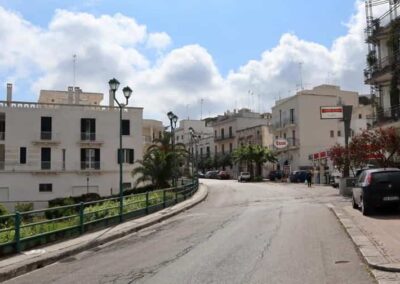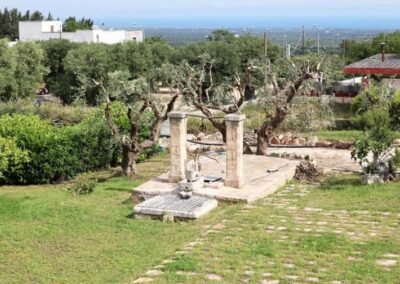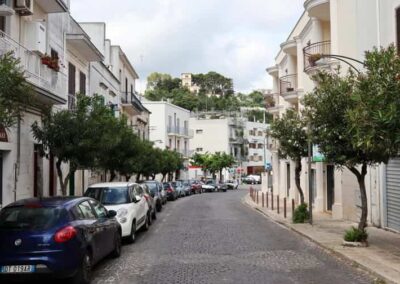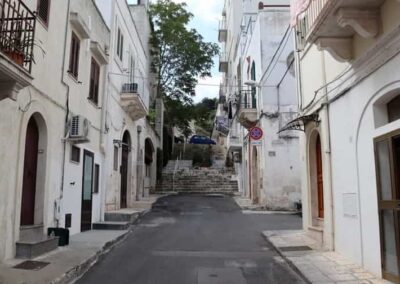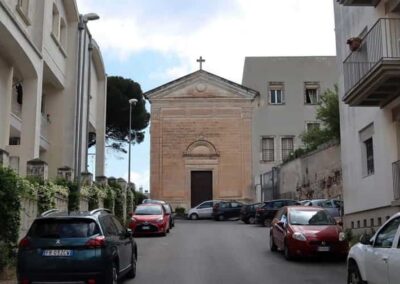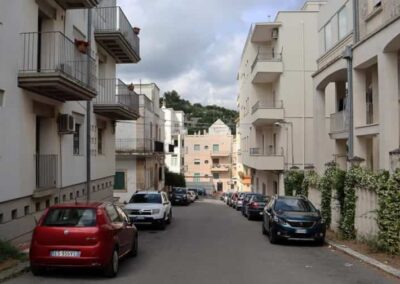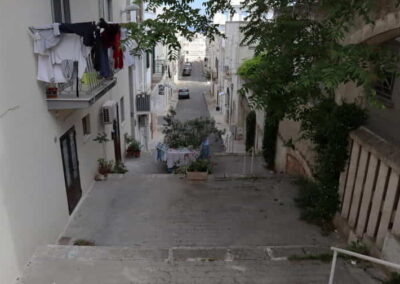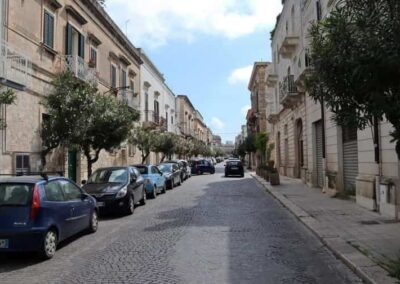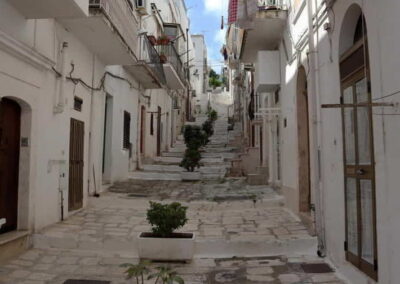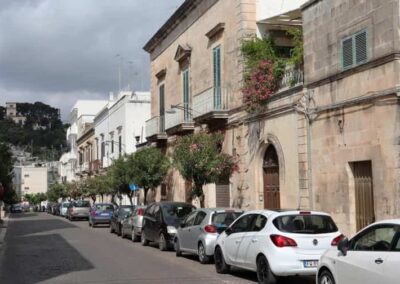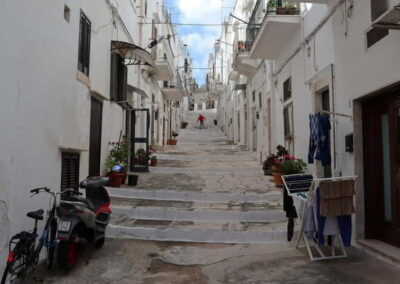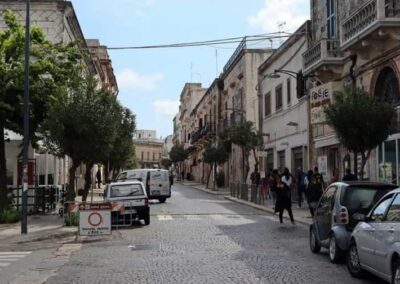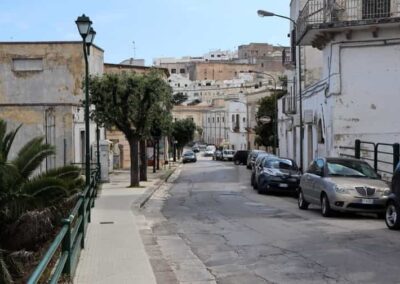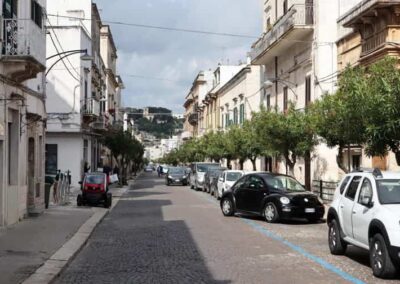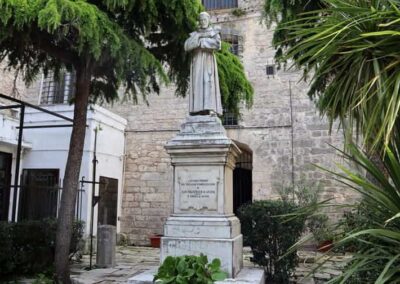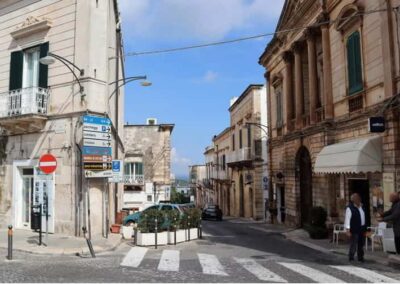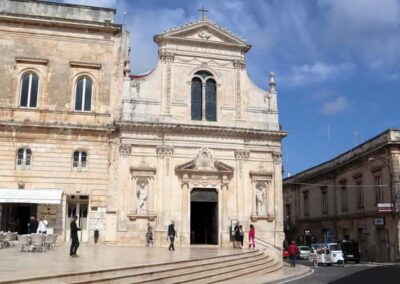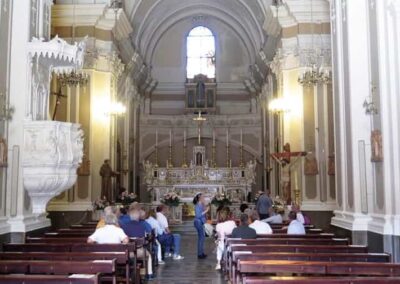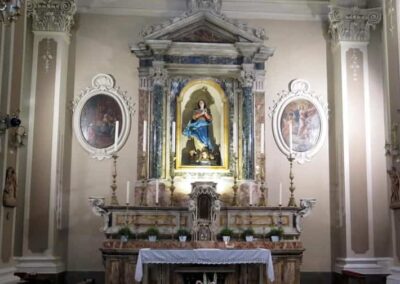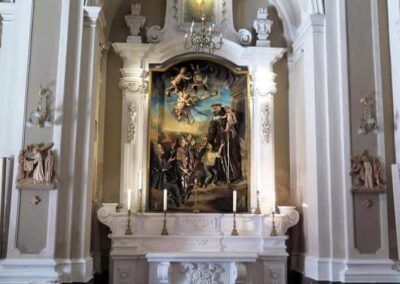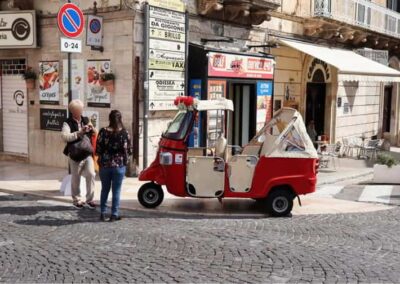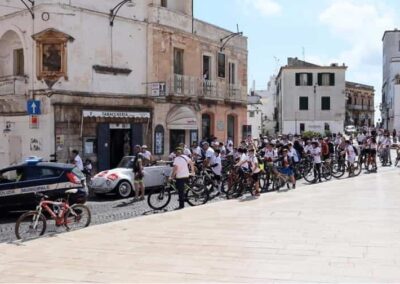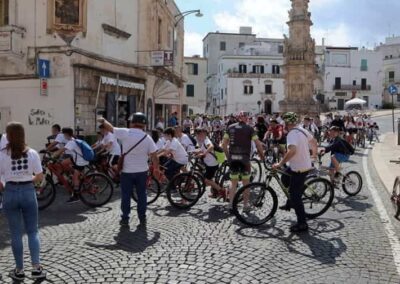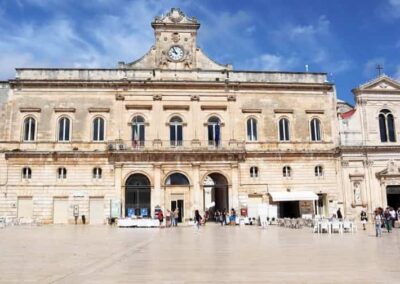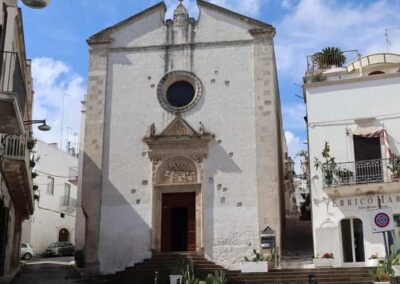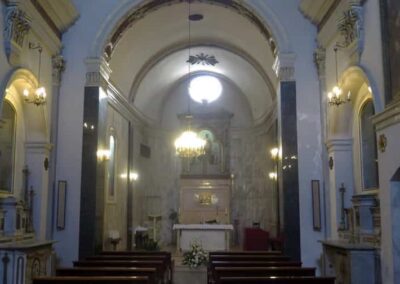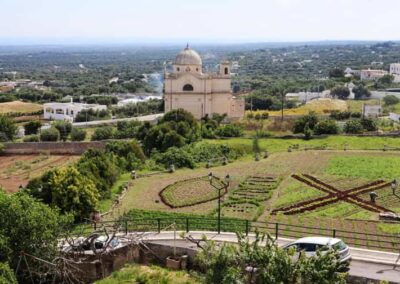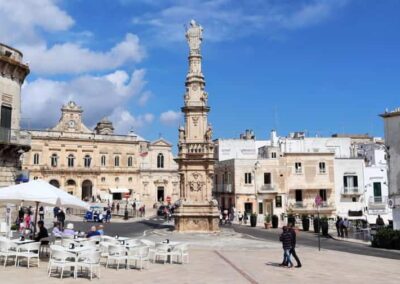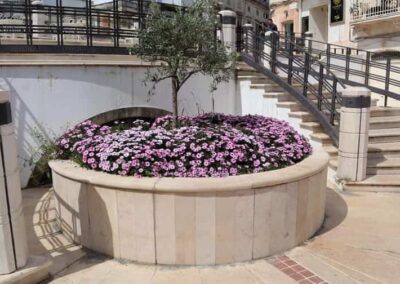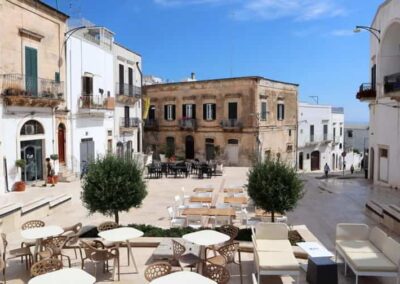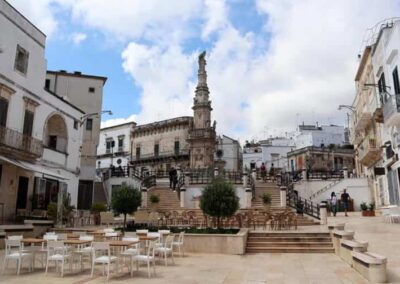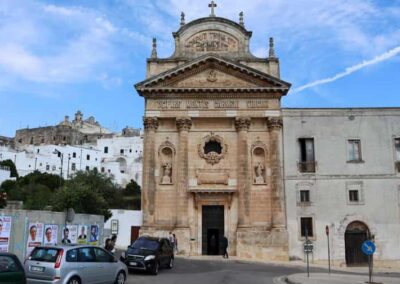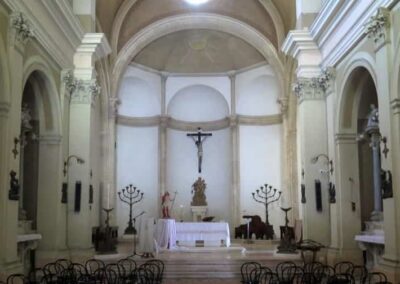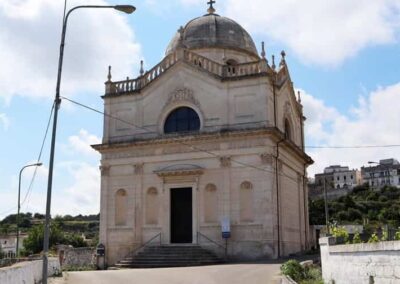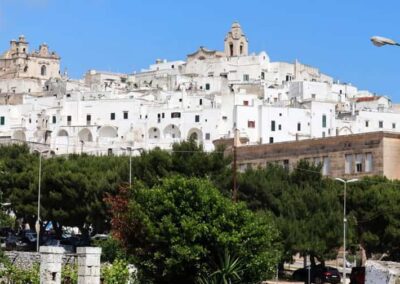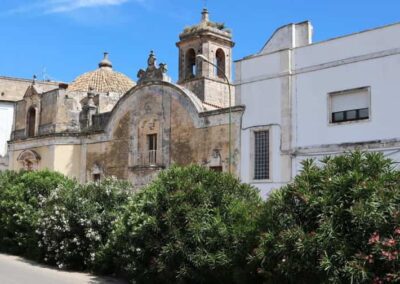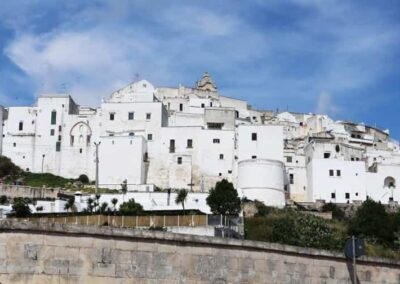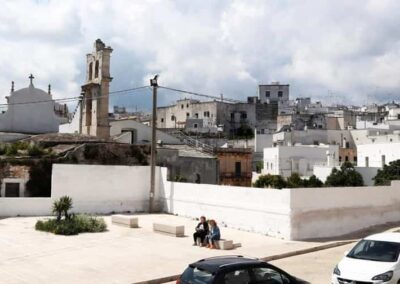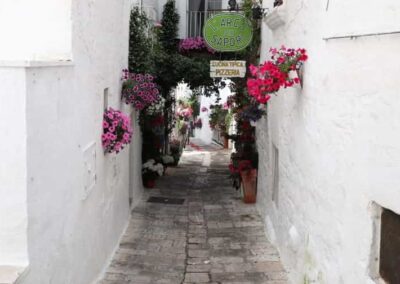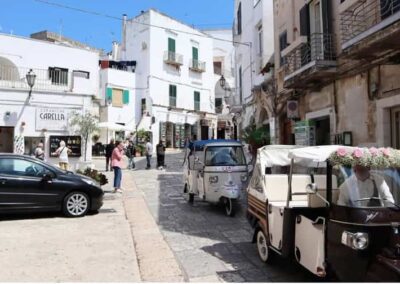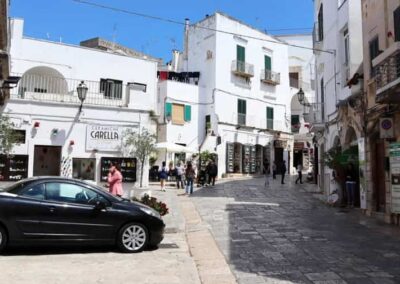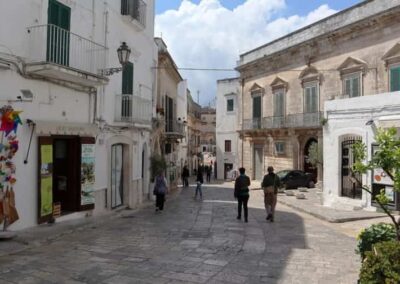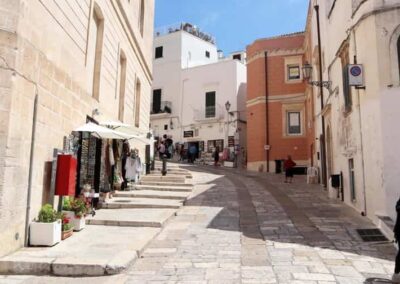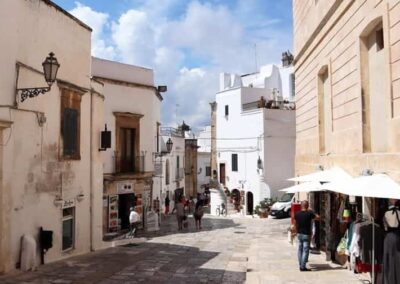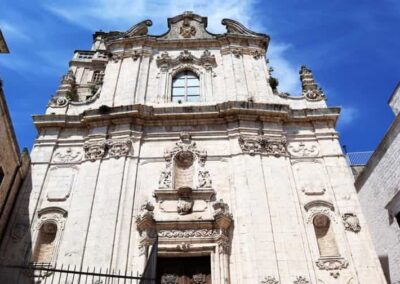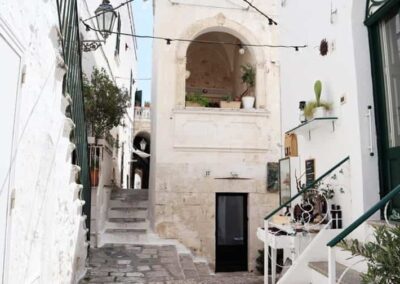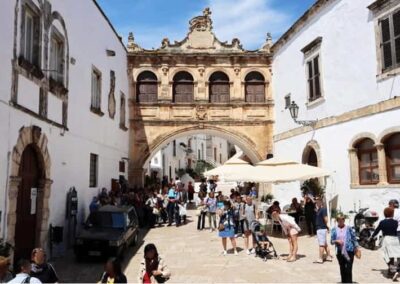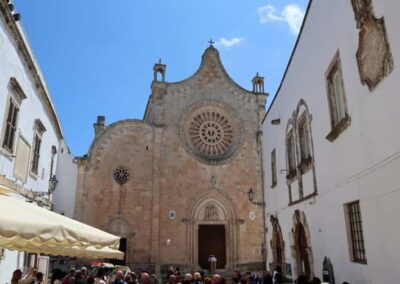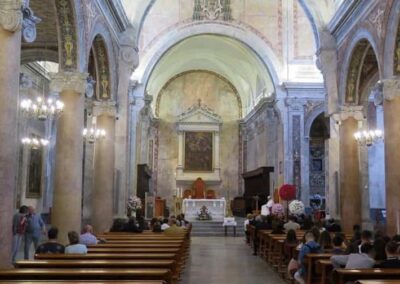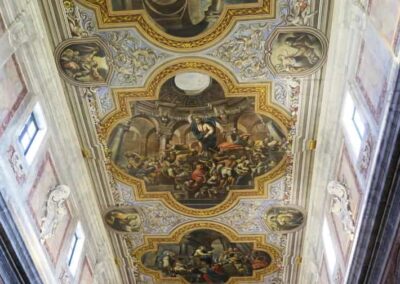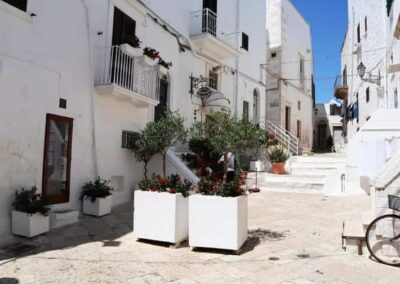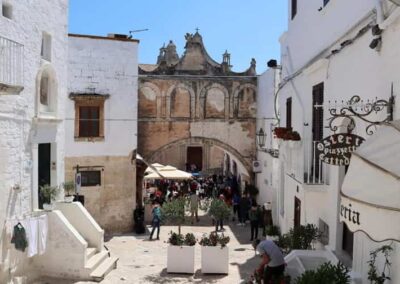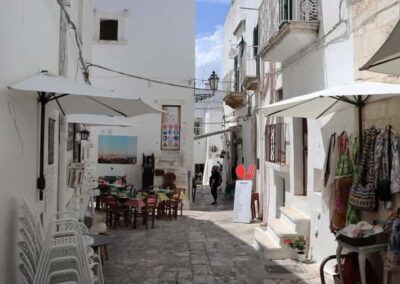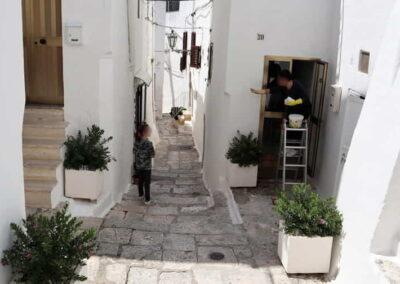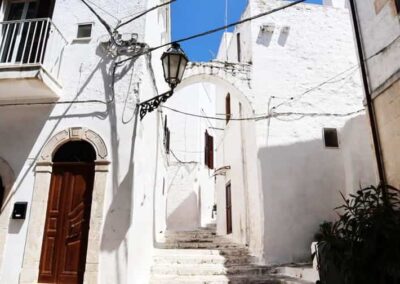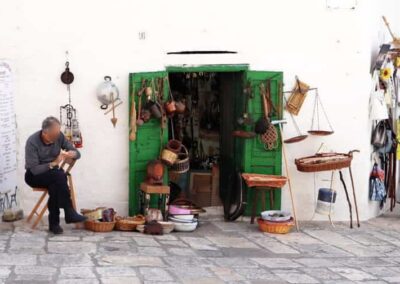HOME
THE REGIONS OF ITALY
PLACES IN ITALY
Italy in Photos
Vicolo Domenico Anglani, 72017 Ostuni, Italy (June 2019)
Ostuni
Ostuni, often referred to as the “White City” (La Città Bianca), is a mesmerizing city located in the heart of the Apulia region in southern Italy. Perched gracefully atop three hills, Ostuni overlooks the vast expanse of olive groves that stretch towards the Adriatic Sea, offering breath-taking panoramic views and a unique blend of history, culture, and natural beauty. This enchanting destination captivates visitors with its labyrinthine streets, dazzling whitewashed buildings, and a vibrant atmosphere that embodies the essence of Mediterranean charm. The origins of Ostuni date back to the Paleolithic era, with evidence of human settlements found in the surrounding caves and grottos. The town’s name is derived from the Greek words “Astu néon,” meaning “new city,” a testament to its ancient roots and the influence of various civilizations over the centuries. Initially established by the Messapians, an indigenous Italic tribe, Ostuni later came under the control of the Romans, who recognized its strategic importance and developed it further as a fortified settlement. Throughout the Middle Ages, Ostuni endured a tumultuous history, facing numerous invasions and changing hands between various powers, including the Byzantines, Normans, Swabians, and Aragonese. Each ruling entity left an indelible mark on the town’s architecture and cultural fabric, contributing to its rich and diverse heritage. In the 17th century, Ostuni experienced a renaissance under the reign of the Duchess Isabella d’Aragona, who fostered economic growth and urban development, shaping much of the town’s current appearance.
What truly sets Ostuni apart is its stunning old town, known locally as “La Terra.” This historic centre is a dazzling maze of narrow, winding streets, staircases, arches, and open spaces, all uniformly painted in brilliant white. The tradition of whitewashing the buildings dates to the Middle Ages and was initially adopted for practical reasons, such as reflecting the intense heat during summer and providing a sense of cleanliness and purity. Over time, it has become a defining characteristic of Ostuni, creating a surreal and enchanting atmosphere that enthrals all who visit. At the pinnacle of the old town stands the majestic Ostuni Cathedral, a splendid example of late Gothic architecture adorned with intricate carvings and a stunning rose window. The cathedral, built in the 15th century, serves as a focal point of the town and offers insight into Ostuni’s historical and religious significance. Surrounding the cathedral are numerous palaces, churches, and traditional houses that showcase a harmonious blend of architectural styles, reflecting the town’s multifaceted past. Ostuni’s vibrant culture is deeply rooted in its traditions, festivals, and culinary excellence. The city comes alive with numerous events throughout the year, most notably the “Sagra dei Vecchi Tempi,” a festival celebrating traditional crafts, music, and local cuisine. Visitors can immerse themselves in the lively atmosphere, enjoying folk dances, music performances, and savouring authentic Apulian dishes.
The region is renowned for its exceptional olive oil and wines, produced from the centuries-old olive groves and vineyards that blanket the surrounding countryside. Local restaurants and trattorias offer a delectable array of dishes featuring fresh, locally sourced ingredients, such as orecchiette pasta, grilled seafood, and burrata cheese, providing a true taste of Apulian gastronomy. Beyond its historical and cultural treasures, Ostuni boasts an enviable location amidst some of Italy’s most stunning natural landscapes. The town is just a short drive from the pristine beaches of the Adriatic coast, where crystal-clear waters and golden sands await sunseekers and nature enthusiasts alike. The nearby Dune Costiere Regional Natural Park offers opportunities for hiking, cycling, and exploring diverse ecosystems rich in flora and fauna. The countryside surrounding Ostuni is dotted with traditional “masseria” farmhouses and ancient Trulli structures, offering picturesque scenery and a glimpse into rural life in Apulia. Visitors can explore these charming landscapes, indulge in agritourism experiences, and discover the timeless beauty that defines this region. Ostuni stands as a shining jewel in the heart of Apulia, captivating visitors with its stunning architecture, rich history, and vibrant culture. Whether wandering through its enchanting, whitewashed streets, exploring historical landmarks, indulging in exquisite local cuisine, or basking in the natural beauty of its surroundings, Ostuni offers an unforgettable experience that embodies the quintessential charm of southern Italy. This timeless city invites travelers to step back in time and immerse themselves in a world where tradition and beauty harmoniously coexist.
Worth a Visit
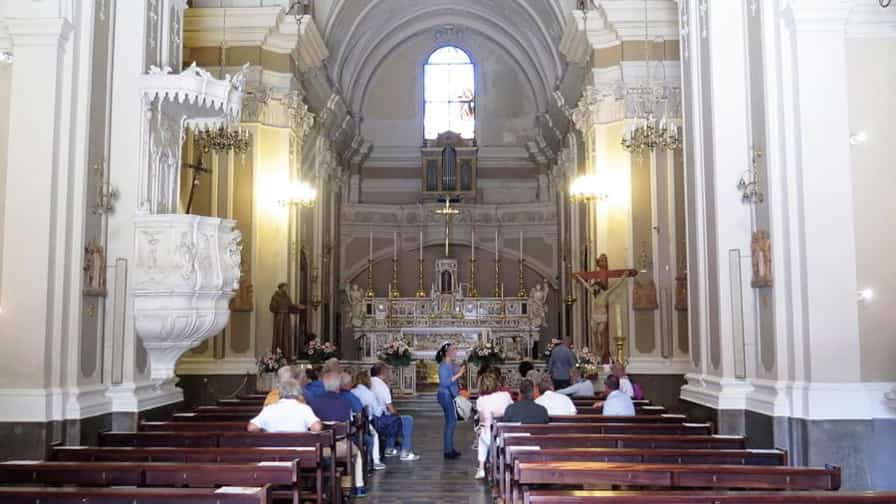
The Chiesa di San Francesco, located along Corso Giuseppe Mazzini in Ostuni, is one of the city’s most distinguished and historically rich churches. Originally founded in the 13th century by the Franciscan order, it has undergone several transformations that blend Gothic and Baroque architectural elements. Its elegant façade, featuring intricate stonework and a majestic portal, reflects the artistic refinement of the period. Inside, the church offers a serene and contemplative atmosphere, adorned with beautiful altars, religious sculptures, and frescoes that narrate centuries of devotion and craftsmanship. The main altar, crafted in marble and gilded details, stands as a focal point of sacred artistry. Beyond its religious importance, the Chiesa di San Francesco is also a cultural treasure, representing Ostuni’s deep spiritual heritage and architectural splendour. Nestled within the whitewashed streets of the “White City,” it remains a peaceful haven of beauty, faith, and history.
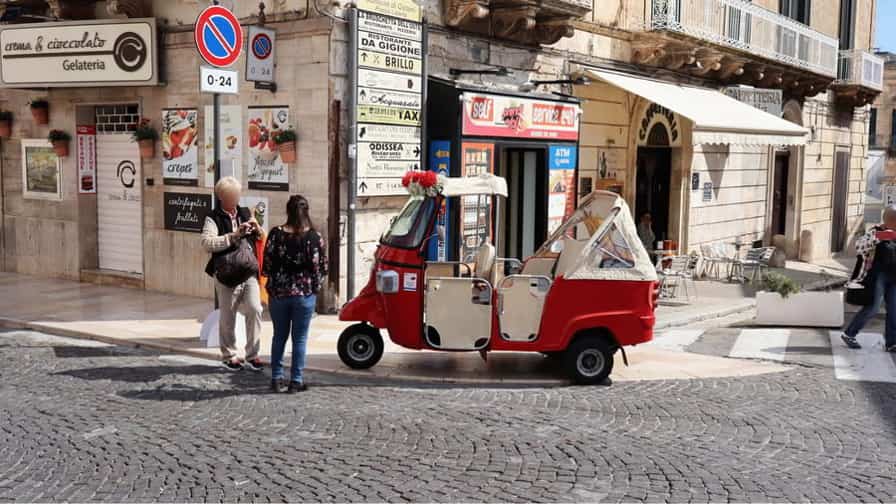
Piazza della Libertà is the vibrant heart of Ostuni, the famous “White City” in southern Italy’s Puglia region. Surrounded by elegant baroque and neoclassical buildings, the square serves as a lively meeting point for locals and visitors alike. Dominating the piazza is the impressive Colonna di Sant’Oronzo, an 18th-century column dedicated to the city’s patron saint, offering both historical and artistic significance. The surrounding architecture, including the former town hall and the Church of San Francesco, reflects Ostuni’s rich blend of cultural influences. By day, the square buzzes with cafés, restaurants, and market life, while at night it transforms into a beautifully illuminated stage for social gatherings and events. Piazza della Libertà also marks the gateway to Ostuni’s old town, with its maze of whitewashed alleys and panoramic viewpoints. It remains a symbol of Ostuni’s enduring charm, history, and Mediterranean spirit.
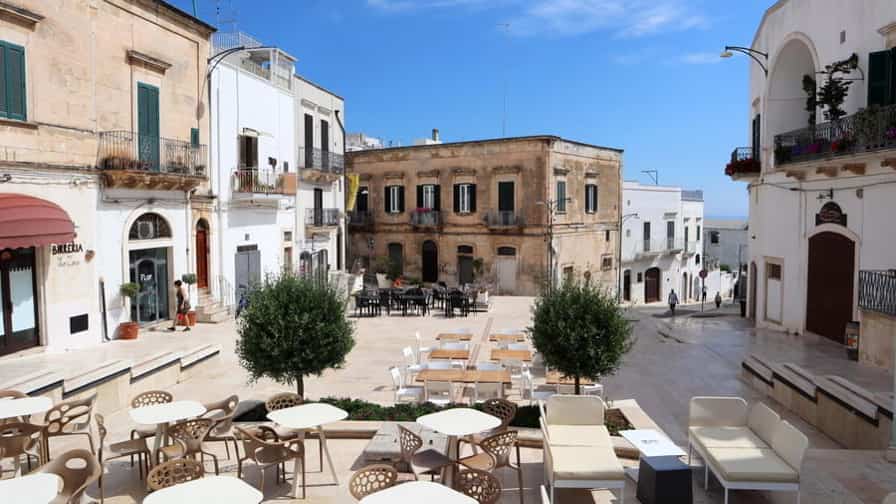
Via Indipendenza is one of Ostuni’s most charming and characteristic streets, reflecting the timeless beauty of the “White City” in southern Italy’s Puglia region. Stretching gracefully through the historic centre, it connects important landmarks while offering a picturesque glimpse of daily life. Lined with whitewashed houses, quaint balconies overflowing with flowers, and artisan shops, the street embodies the warm Mediterranean spirit that defines Ostuni. As visitors stroll along Via Indipendenza, they can admire stunning views of the surrounding countryside and the Adriatic Sea shimmering in the distance. The street is also home to cosy cafés and traditional restaurants, where local cuisine and hospitality come together in perfect harmony. Whether visited during the quiet morning hours or under the golden evening light, Via Indipendenza captures the authentic soul of Ostuni, a blend of history, elegance, and southern Italian charm that enchants every traveller
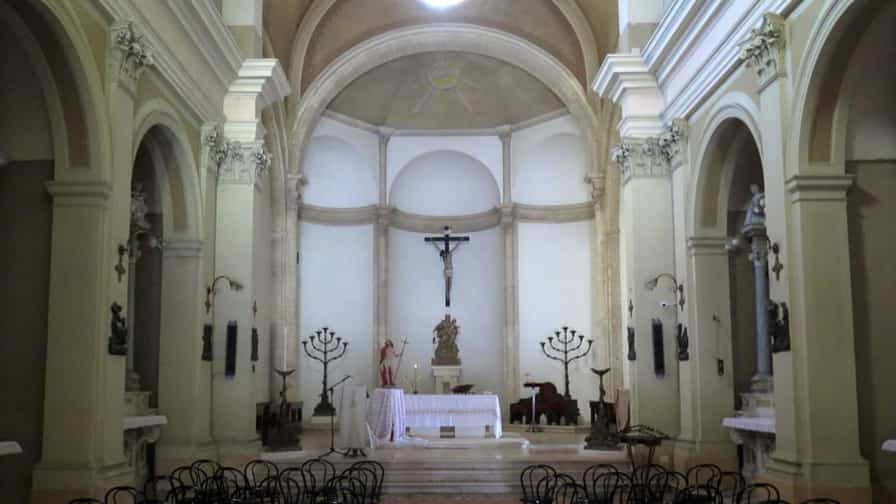
The Chiesa del Carmine, located on Via Giosuè Pinto in Ostuni, is a beautiful example of Baroque religious architecture that enriches the city’s historic charm. Built in the 18th century, the church is dedicated to Our Lady of Mount Carmel and reflects the deep devotion of the Carmelite order. Its elegant façade, adorned with ornate stone carvings and graceful curves, captures the artistic spirit of the period. Inside, the atmosphere is serene and contemplative, featuring richly decorated altars, intricate stucco work, and paintings depicting scenes from the life of the Virgin Mary. The main altar, crowned by a statue of the Madonna del Carmine, stands as a focal point of faith and beauty. Surrounded by Ostuni’s characteristic whitewashed streets, the Chiesa del Carmine offers visitors a peaceful retreat and a glimpse into the city’s spiritual and artistic heritage, harmoniously blending art, devotion, and history.
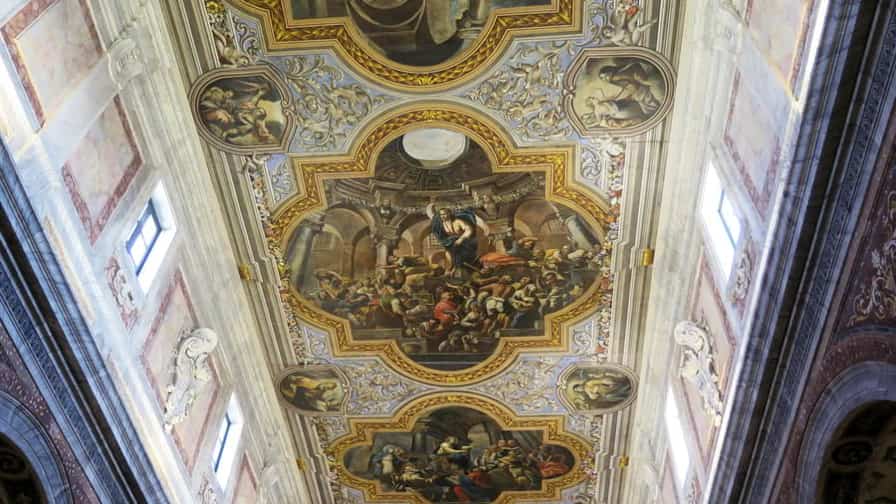
The Concattedrale di Santa Maria Assunta in Cielo, located in Piazza Beato Giovanni Paolo II in Ostuni, is the city’s most important religious monument and a masterpiece of late Gothic architecture. Built between the 15th and 16th centuries, the cathedral stands majestically at the highest point of Ostuni’s old town, offering sweeping views over the whitewashed houses and the Adriatic Sea beyond. Its stunning rose window—one of the largest in Europe—is a defining feature, intricately carved with symbolic motifs representing the harmony of creation. Inside, the cathedral exudes serenity, with elegant arches, ornate chapels, and precious artworks that reflect centuries of faith and craftsmanship. The interior’s blend of Gothic and Baroque styles reveals the evolving artistic influences of the region. As a spiritual and cultural landmark, the Concattedrale di Santa Maria Assunta in Cielo embodies Ostuni’s deep devotion, architectural splendour, and enduring historical legacy.
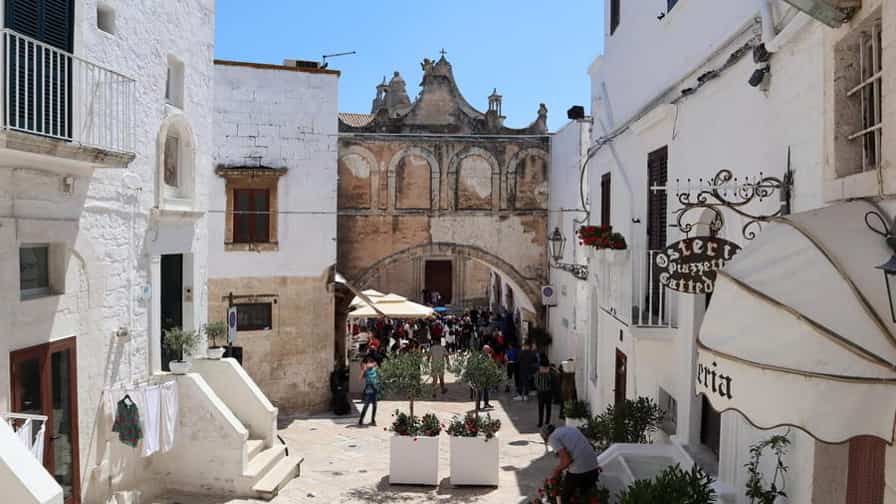
The Arco Scoppa, located on Largo Arcidiacono Trinchera in Ostuni, is one of the most iconic architectural landmarks of the “White City.” This elegant 18th-century arch gracefully connects the Concattedrale di Santa Maria Assunta in Cielo with the former Episcopal Palace, symbolizing the union of spiritual and civic power. Built in 1750, the arch features intricate Baroque and Rococo details, with elegant stone carvings and a series of small windows that create a harmonious balance between lightness and strength. Its design is said to have been inspired by Venice’s Bridge of Sighs, giving it a romantic and timeless charm. Standing beneath the Arco Scoppa offers a perfect view of Ostuni’s winding streets and whitewashed buildings, capturing the city’s enchanting character. Today, it remains a favourite spot for photographers and visitors, representing Ostuni’s artistic heritage, architectural grace, and enduring southern Italian beauty.
Photo Gallery of Walk 1 – Corso Giuseppe Mazzini to Corso Vittorio Emanuele II
Approximately 1.18 km – 0.73 miles
The walk starts in Corso Giuseppe Mazzini – Via Giuseppe Rodio – Giuseppe Orlando – Via Giuseppe Rodio – Corso Giuseppe Mazzini – Vicolo Domenico Anglani – Corso Giuseppe Mazzini – Vico Aurelio Saffi – Corso Giuseppe Mazzini – Via G. Pisanelli – Corso Giuseppe Mazzini – Chiesa di San Francesco, Corso Giuseppe Mazzini – Piazza della Libertà – Via Matteo Renato Imbriani – Chiesa dello Spirito Santo, Via Roma – Corso Vittorio Emanuele II
Photo Gallery of Walk 2 – Via Indipendenza to Via Giovanni Antonio Petrarolo
Approximately 1.51 km – 0.94 miles
The walk starts in Via Indipendenza -Via Salvatore Tommasi – Chiesa del Carmine, Via Giosuè Pinto – Unnamd Roads – Via Arciduca Francesco Antonio Zaccaria – Via Cattedrale – Concattedrale di Santa Maria Assunta in Cielo, Piazza Beato Giovanni Paolo II – Piazza Beato Giovanni Paolo II – L. Arcidiacono Trinchera – Arco Scoppa, L. Arcidiacono Trinchera – Via F. Incalzi Antonelli – Vico Pasquale Villari – Via Giovanni Antonio Petrarolo
COPYRIGHT © 2018-2025 ITALY IN PHOTOS - ALL RIGHTS RESERVED
